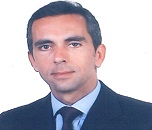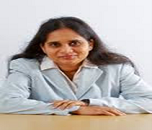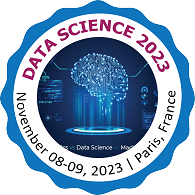About Conference
Software Engineering is one of the top branches for Engineering and Technology meetings. We are pleased to announce our Data Science 2023, Information Technology and Data Science Conference, which is slated for November 08-09, 2023 Paris, despite the enormous advancements in computer science, engineering, data science, and information technology. connecting researchers, directors, and students with academic experts, communities and associations, researchers, and students for upcoming data science advancements and improvements, and also providing data science companies and information technology enterprises with exceptionally designated intelligent marketing, education, content, and IT research solutions.
Designing Meetings and Conferences occupies a sizable portion of the time spent studying Computer Science Engineering and Information Technology, which is one of the crucial settings for academics, scientists, researchers, students, scholars, researchers, industrial and business specialists.
A gathering called Data Science 2023 will be held to discuss and exchange knowledge on data science, information technology, and digital health. By bringing together academic scientists, space researchers, business representatives, talented student communities, research scholars, business leaders, and investors in this astounding subject, this conference facilitates debate about the exchange of ideas and genuine points of view. Distinguished driving Scientists and specialists from around the world as well as extraordinary recognised subject matter experts are expected to share their knowledge. We attempt to bring experts from many domains together to create situations that will allow for their synergistic collaboration and, ideally, the production of novel, consistent results.
Data Science 2023 will focus on IoT while covering a broad range of topics related to innovative Digital Health, Data Science, and IT applications.
Scientists and analysts in the diverse fields of artificial intelligence and computer science design are likely to attend this meeting and use the opportunity to expand their skill sets. They will likely work on fundamental and important applications as well as their lords' and exploration work in programming building streams. Members from both the industry and academia who work in data science, computer science and engineering, technology, but who are not limited to specific computer science applications, such as directors, ceo's, presidents and vice presidents, VPs, CEOs, CTOs, MDs and GM, buyers and acquirement trained professionals, designers and R&D architects, deans and professors, scientists, software engineers, offices, and data science engineers.
Sessions &tracks
Session 1: Data Mining and Statistical Analysis
Statistical Analysis and Data Mining covers the broad area of ​​data analysis, including data mining algorithms, statistical approaches, and practical operations. Subjects include problems involving massive and complex datasets, results exercising innovative data mining algorithms and/or new statistical approaches. Data mining is the process of rooting and discovering patterns in large data sets involving styles at the intersection of machine learning, statistics and database systems. Statistical analysis is the process of collecting and analyzing large volumes of data to identify trends and develop valuable insight. In the professional world, statistical judges collect raw data and find correlations between variables to reveal patterns and trends to applicable stakeholders.
Session 2: Role of AI in Industry
Big data and artificial intelligence are giving the industry a tremendous boost. Smart software solutions can use the vast amounts of data generated by factories to identify trends and patterns, improving the efficiency of manufacturing processes and reducing energy consumption. The main categories where industrial AI can contribute include: product and service innovation, process improvement & insight discovery. The Cloud Foundry service platform extensively incorporates artificial intelligence technologies. AI can be applied to production data to improve failure prediction and planning. Thereby, reducing the maintenance cost of the production line. Many other applications and benefits of AI in production are also possible
Session 3: Big Data Analytics
Big data analytics is the use of advanced analytical techniques on very large and diverse data sets consisting of structured, semi-structured and unstructured data from different sources, ranging in size from terabytes to zeta bytes. Here are some examples: Use analytics to understand customer behavior to optimize customer experience. Predict the future trends to make better business decisions. Improve your marketing campaigns by understanding what's working and what's not. In different phases of business analysis, large amounts of data are processed. According to the requirements of the type of analysis, there are five types of analysis: descriptive analysis, diagnostic analysis, predictive analysis, prescriptive analysis and cognitive analysis.
Session 4: Blockchain Technology
A blockchain technology is a distributed database or ledger (one of today's top technology trends), which means that the power to update the blockchain is distributed among nodes or participants in a public or private computer network. This is known as distributed ledger technology. Bitcoin purchases and sales are entered and transmitted to a network of powerful computers called nodes. The network of thousands of nodes around the world, compete to confirm transactions using computer algorithms. This is called Bitcoin mining. Blockchain helps to verify and trace multi-step transactions that need to be verified and traced. It provides secure transactions, reduces compliance costs & speed up the data transfer processing. Blockchain technology can help with contract management and auditing the provenance of products.
Session 5: Information Technology
Information Technology (IT) refers to the use of any computer, storage, network and other physical devices, infrastructure and processes to create, process, store, protect and exchange electronic data in all its forms. Information Technology (IT) plays a vital role in today's personal, business and non-profit uses. Information Technology is the main driver of innovation without which businesses cannot survive because they are the wave of the future. Increased computer power has resulted in faster and cheaper computer processing & cheaper data storage. For example: optical storage media. Digitization of information texts, graphics, photos, speech, sound, video, etc
Session 6: Edge Computing
Edge computing is an emerging computing paradigm that refers to a series of networks and devices at or near the user. Edge refers to processing data closer to where it is generated, allowing for faster processing and greater capacity, resulting in better action-driven results in real time. Edge computing is the local processing and storage source for IoT device data and computing needs, reducing communication latency between IoT devices and the central IT network to which these devices are connected. Edge computing is a distributed computing framework that brings enterprise applications closer to data sources such as IoT devices or local edge servers etc. This proximity to the source of data can lead to powerful business benefits, including faster insights, improved response times & better bandwidth availability.
Session 7: Health IT Systems
Health information systems (HIS) serve multiple users and broad purposes and can be summarized as generating information that enables decision makers at all levels of the health system to identify problems and needs, make evidence-based decisions on health policy and optimize the allocation of scarce resources. Health IT is also providing access through patient portals, giving patients greater control over their health data. Patient portals enable individuals to view medical test results, download patient data, communicate with physicians, schedule medical appointments, and more through a website application or mobile application. Most healthcare AI technologies using machine learning and precision medicine applications require medical images and clinical data for training, while the end result is known. This is called supervised learning.
Session 8: Big Data in Nursing Research
The term "big data" refers to the volume of data that is beyond human comprehension and cannot be managed by standard computing systems. Big data is becoming more prevalent in nursing and healthcare settings. Data scientists continually develop knowledge and specific methods for managing this data. Nursing professionals who can leverage this data can use it to develop holistic treatment strategies for patients that more effectively meet their needs. Using big data in healthcare can help patients take a more proactive approach to care. Nurse researchers use secondary data analysis in epidemiological studies, risk assessments, skills assessments, and practice comparisons across geographic regions, and outcomes studies.
Session 9: Big Data Technologies
Big data technologies are software tools used to manage all types of data sets and turn them into business insights. In data science careers such as big data engineers, complex analytics evaluate and process large amounts of data. The most important and anticipated technology is now in sight. This is Apache Spark. It is an open-source analytics engine that supports big data processing. Big data analytics help organizations harness data and leverage it to discover new opportunities. The result is smarter business moves, more efficient operations, higher profits and happier customers. Companies using big data and advanced analytics can capture value in a number of ways, including: Reduced capital.
Trending Technologies in 2023
Session 10: Big Data Optimization
Data optimization is the practice of changing an organization's data strategy to improve the speed and efficiency of data extraction, analysis, and use. The goal of optimization is to find the best acceptable answer given some conditions of the problem. For a problem, there may be different solutions, in order to compare them and choose the optimal solution; a function called the objective function is defined. The goal of optimization is to achieve the "best" design according to a set of priority criteria or constraints. These include factors such as maximizing productivity, strength, reliability, longevity, efficiency and utilization. Data optimization alleviates this problem by reorganizing datasets and filtering out inaccuracies and noise. The result is often a dramatic increase in the speed at which actionable information is extracted, analyzed, and delivered to decision makers.
Session 11: Big Data Applications, Challenges and Opportunities
Big data can enhance the discovery, access, availability, utilization and supply of information in companies and supply chains. It can help discover new data sets that have not yet been used to drive value. Big data applications process and manage large amounts of data, often measured in terabytes or more. Processing such large data volumes can be time-consuming, taking months to complete. Big data challenges are real implementation barriers. These all require immediate attention and need to be dealt with, because if not dealt with, there may be technical glitches, which may also lead to some unpleasant results. Big data challenges include storing and analyzing extremely large and rapidly growing data volumes. Big data can reduce long-term costs, improve investment capabilities, and improve understanding of cost drivers and impacts.
Session 12: Machine Learning
Machine learning is an artificial intelligence technique that teaches computers to learn from experience. Machine learning algorithms use computational methods to learn information directly from data without relying on predetermined equations as models. There are four basic approaches: supervised learning, unsupervised learning, semi-supervised learning, and reinforcement learning. Machine learning is used in internet search engines, email filters to classify spam, websites to provide personalized recommendations, banking software to detect unusual transactions, and many applications on our mobile phones (such as voice recognition).
Session 13: Data Warehousing
A data warehouse integrates data and information collected from various sources into a comprehensive database. For example, a data warehouse might incorporate customer information from an organization's point-of-sale system, mailing lists, website, and comment cards. A data warehouse is a central repository of information that can be analyzed to make more informed decisions. Data typically flows into data warehouses regularly from transactional systems, relational databases, and other sources. SQL Data Warehouse is a cloud-based enterprise data warehouse (EDW) that leverages massively parallel processing (MPP) to quickly run complex queries across petabytes of data. Use a SQL data warehouse as a key component of a big data solution.
Session 14: Cloud computing
Cloud computing is the on-demand availability of computer system resources, especially data storage and computing power, without direct active management by users. The functions of a large cloud are often distributed across multiple locations, each of which is a data center. Simply put, cloud computing is the delivery of computing services (including servers, storage, databases, networking, software, analytics, and intelligence) over the Internet (“the cloud”) to provide faster innovation, flexible resources, and economies of scale. Cloud computing makes data backup, disaster recovery, and business continuity easier and less costly because data can be mirrored at multiple redundant sites on the cloud provider's network. They don't float in cyberspace. Cloud space exists on individual servers in data centers and server farms around the world. Data centers and hosting providers provide server space for cloud computing.
Session 15: Crypto currency
A cryptocurrency, crypto- currency, or crypto is a digital currency designed to be maintained or maintained over a computer network as a medium of exchange without relying on any central authority, such as a government or bank. It’s a decentralized system for verifying that parties to a sale have the funds they claim to have, eliminating the need for traditional intermediaries like banks when funds are transferred between two realities. A cryptocurrency is a type of digital currency, an integral form of payment created using encryption algorithms. The use of cryptography means that cryptocurrencies can be used both as money and as a virtual account system. Cryptocurrencies can be a great investment with astronomically high returns overnight; despite this, there is a considerable downside. Investors should analyze whether their time horizon, threat tolerance, and liquidity conditions fit their investor profile.
Session 16: Crypto Trading
Cryptocurrency trading refers to taking a financial position on the price direction of an individual cryptocurrency against the U.S. dollar (in the crypto/dollar pair) or another cryptocurrency through crypto-to-crypto pairs. CFDs (Contracts for Difference) are a particularly popular way to trade cryptocurrencies due to their reduced inflexibility, leverage of leverage and the ability to take short and long positions. Cryptocurrency trading is becoming more and more popular. Cryptocurrencies are digital currencies created using Blockchain or peer-to-peer technology that uses cryptography to ensure security. They differ from fiat currencies issued by governments around the world in that they are untouchable; they consist of bits and bytes of data. Furthermore, cryptocurrencies do not have a central body or authority similar to a central bank to issue cryptocurrencies or regulate their circulation in the economy. Since cryptocurrencies are not issued by any government agency, they are not considered legal tender.
Market Analysis
Data is being used in business to distinguish between winners and losers. Information can now be gathered from a wide range of sources, and technology for extracting insights is getting easier to use. The foundation of the wave of digital change sweeping through every industry in 2023 and beyond is moving to a data-driven business model, where decisions are made based on what we know to be true rather than "gut instinct." When faced with uncertainty, it helps us to act with clarity, especially when armed conflicts and pandemics upend the status quo.
However, the world of analytics and data is always evolving. Technologies that provide quicker and more accurate access to information are continually being developed. New trends also appear giving us fresh perspectives on what is great.
Data Democratization
One of the most significant trends will be the increasing empowering of whole workforces to use analytics, as opposed to just data engineers and data scientists. In order to help everyone perform their professions more successfully and efficiently, tools, programmes, and devices are pushing intelligent insights into everyone's hands. As a result, new forms of augmented working are emerging.
Businesses will realise in 2023 that data is essential to comprehending their clients, creating better goods and services, and optimising internal processes to cut costs and waste. But it's becoming more and more obvious that this won't truly happen until frontline, shop floor, and non-technical personnel, as well as roles like marketing and sales have the ability to act on data-driven insights.
Abstract Submission Criteria and Eligibility
Presentation Requirements:
Participating authors are answerable for registration, travel, and hotel costs. Note: Those with submitted abstracts will get an acknowledgment mail enabling them to enrol for the gathering.
-
Abstracts will be compiled, and conference books are made available to participants at the conference.
-
Any presenter who is unable to attend should arrange for another qualified individual to present the paper/poster in question. If such a change is necessary, please notify our conference team
Submission Options:
-
Oral paper introductions will have 30-minute schedule time slot. The keynote session will have for 45-minute presentation duration, workshop/special session will have 1-hour long schedule opening and symposium will have 1-hour long availability followed by 5-minute Q&A session.
-
Graduate and master’s understudies are qualified to present their abstracts under poster and e-poster presentation category.
-
Ph.D. understudies are qualified to submit their abstract under special YRF (Young Researcher's Forum), poster and e-poster presentation category.
-
NOTE: YRF category includes short oral presentation especially for Ph. D. students
-
Extended abstract: Submissions should utilize the Abstract Template. Papers submitted in this category may represent original empirical research, theoretical development, reviews, or critiques.
Participation Options and Benefits
Participation Options: Data Science Conference provides the participants with different modes or ways to participate such as Delegate or Speaker under ACADEMIC / STUDENT / BUSINESS Category. Mode of participation is Online through Power Point Presentation/ Video Presentation on Cisco Webinars.
-
Keynote speaker: 45-50 minutes
-
Speaker (oral presentation): 25-30 minutes (only one person can present)
-
Speaker (workshop): 45-50 minutes (more than 1 can present)
-
Speaker (special session): 45-50 minutes (more than 1 can present)
-
Speaker (symposium): more than 45 minutes (more than 1 can present)
-
Delegate (only registration): will have access to all the sessions with all the benefits of registration
-
Poster presenter: can present a poster and enjoy the benefits of delegate
-
Remote attendance: can participate via video presentation or e-poster presentation
-
Exhibitor: can exhibit his/her company’s products by booking exhibitor booths of different sizes
-
Media partner
-
Sponsor
-
Collaborator
Benefits of Joining Conference:
-
Get your abstract published with DOI
-
Get Certified for your participation
-
Reduced Costs Affordability
-
Knock Down Geographical Barriers
-
Convenience from comfort of your own home or from work
-
They’re Archived: Ability to view events in the recording
-
Great resource for learning new career skills
-
Learn from the Pros
-
Global exposure to your research
-
Make new connections
-
Significant time saving
-
Wider Reach
-
Position yourself as the expert
-
Get your abstracts published with unique DOI in International Journals
-
Get up to 50% discounts for publishing your entire article in our open access International Journals
-
Get Handbooks and conference kits
Get an access to the network with eminent personalities from worldwide.











